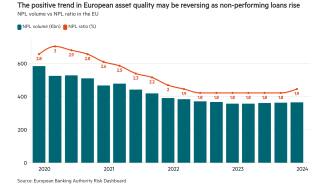According to the Financial Conduct Authority’s (FCA’s) Financial Lives 2022 Survey, nearly half of UK adults exhibit at least one vulnerable characteristic. But all bank customers are at risk of becoming vulnerable, the FCA says, and this risk is increased by characteristics relating to health, life events, resilience and capability.
In the aftermath of the Covid-19 pandemic and amid the ongoing cost of living crisis and rising interest rates, identifying financial vulnerability is increasingly important, as outlined by the FCA’s new Consumer Duty Act. It could help banks head off problems before they become much bigger, such as customer defaults on a loan, mortgage or credit card.
So, how can banks better help vulnerable customers?
The increased use of AI, data analytics and technology can play a key role in banks’ support for vulnerable customers, says Jo Bevan-Taylor, head of business consulting for banking and financial markets at NTT Data UK&I.
There is a need to humanise complexity
“There is a need to humanise complexity,” says Ms Bevan-Taylor, referring to demand for banks to offer more tailored communication and personalised banking. With at least one in eight UK bank branches set to close this year, Ms Bevan-Taylor says personalisation can still be at the forefront of developing effective digital journeys without face-to-face interaction.
To identify and support vulnerable customers, Ms Bevan-Taylor says that AI can help banks develop personalised journeys. This can be achieved by, for example, conversational chatbots that assess indications of vulnerability, or by AI models that access banks’ call centre conversations to potentially identify areas where consumers do not understand technicalities.
“Previously, banks could look at about 5% of their customer base in terms of patterns of behaviour, and they certainly didn’t have the manual capacity to analyse all transactions for every customer. Now, banks can efficiently carry out complex analyses of customer bases using technologies like large language models and conversational AI,” says Ms Bevan-Taylor.
Still, while technology plays a key role in supporting financially vulnerable customers, banks’ response to dealing with vulnerable customers remains predominantly reactive, says Ms Bevan-Taylor, given the challenge of predicting vulnerability.
How do customers respond to key life events?
Nabi Omidvar, associate professor of artificial intelligence in finance at Leeds University Business School, looks at how financial vulnerability can be addressed through a pre-emptive approach, rather than by relying on reactionary measures.
While the FCA refers to four main key drivers of financial vulnerability, Mr Omidvar is trying to understand the hidden factors that can indicate an individual’s potential for financial vulnerability.
“It is interesting to consider the extent to which psychometrics and personality traits can play a role in these factors, within the FCA’s key drivers,” he says, pointing to the role of psychometrics — the measurement of psychological traits — in offering a more nuanced way to understand the landscape of financial vulnerability.
For example, while the FCA refers to a recent negative life event as one category, Mr Omidvar says it fails to take into account the different ways people respond to life events based on individual psychological traits. Accounting for these dimensions, Mr Omidvar refers to the ‘big five’: openness, conscientiousness, extraversion, agreeableness and neuroticism.
If psychological traits can be mapped to assess individual-level potential for financial vulnerability, statistics could offer a better way for financial services firms to understand the potential for these vulnerabilities before they come to the fore. This method would better enable banks and financial firms to detect vulnerable customers pre-emptively, rather than dealing with vulnerability once the consequences are clear.
“A big component of this is affective computing, and that is essentially the intersection of psychometrics and psychology with machine learning and computer science,” says Mr Omidvar.
“If someone is high in neuroticism, the way they potentially respond to a life event like a relationship breakdown or bereavement will differ from someone who is naturally low on neuroticism, or their tendency to experience negative emotions. If someone is highly introverted, the likelihood that they have a large social circle to support them in a financial crisis is low in contrast to extroverts. There is potential to measure this through psychometric dimensions,” he adds.
Still, while the data that banks and building societies can access about customers enhances the scope for measuring financial vulnerability, wider investigation is needed to fully understand the landscape of financial vulnerability, says Mr Omidvar, referring to the need for more statistical mapping.
To illustrate this, he points to the wealth of statistics in medical science, where specific conditions, genetics, or behaviours are linked with the probability of developing certain diseases. “We should be able to map a person’s vulnerability to loan sharks, for instance, based on their personality, in the same way that smoking is correlated with risk of disease,” he adds.
Using technology to map out and measure psychological factors, Mr Omidvar hopes to build a model that could demonstrate causality links together with in-depth dynamics of financial vulnerabilities, such as those related to an individual’s numeracy ability.
A barometer for financial literacy
Addressing customer vulnerability is not just about the latest and greatest tech tools. In many cases, problems can arise because of a lack of financial education or literacy.
Joint research by Wealthify and the Centre for Economics and Business Research questioned Britons about their financial understanding as part of plans to develop a new Financial Literacy Benchmark: a barometer to measure financial literacy in the UK.
With questions about inflation, taxes, pensions and savings, the research exposed the UK as a weak performer in financial literacy when compared to other similarly developed countries, like France, Canada and New Zealand. Andrew Russell, CEO at Wealthify, says the data about financial literacy levels in the UK is unsurprising given the lack of education on it. Less than half of young people say they received some financial education at school, according to the UK’s Financial Capability Strategy group.
“I'm in favour of working to get full government support for ensuring people leave education with the right financial literacy, and certainly we'll be pushing on that,” he said. In line with similar models measuring IQ and EQ (emotional intelligence), Mr Russell says that he would like to see the development of an equivalent for financial literacy — potentially an ‘FQ’.
Ms Bevan-Taylor agrees that consumers need an uplift in knowledge. Equally, she adds, banks need to come down further in terms of the level of technical language used to support vulnerable customers. “There’s a ‘meet in the middle’ aspect to this. It needs to be done organically through the journeys that consumers are already making every day when they use a banking app or sign into their online banking,” she says.
As efforts continue to improve financial literacy levels across the UK, and even develop an ‘FQ’, bridging the gap between early detection of financial vulnerability and technology could offer a critical tool for banks to better assess and address financial vulnerability.












